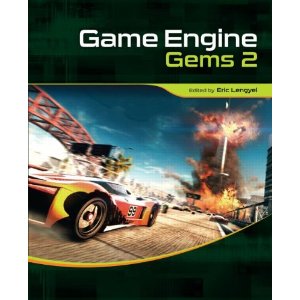Soren Johnson recently published an article, ‘The End of Games? Or, Will Free-To-Play Swallow the Industry’ in the most recent Game Developer Magazine (May 11). The article is great, but it was the title itself that struck me. The industry’s in a crazy, topsy-turvy whirl right now. New markets are emerging, but old markets are suffering. Consoles may even be dying and whole markets may be disappearing all together. There are predictions that many existing studios may not survive.
So, yeah. Soren’s title struck me. It’s both timely and clever. ‘The End of Games?’ he asks. And, in answer, I reply, ‘No!’ It’s not the end of games, but rather, the beginning of something new. What we’re seeing, at this very moment, is the birth of video games as the dominate media of our time. That’s right. You heard me. Games will soon become the dominant media of our day.
Background
Allow me to explain. I’ve been playing games for a long time. I sat, cross-legged on the floor, enthralled by the original release of Pong, on the Atari 2600. I waited eagerly for 15 minutes loading Zaxxon from a cassette tape. I spent 100’s of dollars in the arcade trying to beat Gauntlet, Golden Axe, and Pinbot (Where was Tommy when I needed him!?). I played Doom and Wolfenstein when Id Software was a fledgling, and John Carmack was an unknown. I played Everquest when it was ‘wow’, and World of Warcraft when it was ‘WoW’ too.
I’ve beaten God of War 3 and seen more Might and Magics than Super Bowls. I’ve owned the systems, the consoles, the PC’s, the handhelds, and the laptops. I’ve had the game dates, and hosted the LAN parties, and then the Wii parties, and then the LAN parties again. I’ve spent thousands of hours with my family and friends in games. And of course, I develop games for a living.
During all that time, I considered myself a gamer. I had my gamer friends, a gamer wife, and my 2.5 little gamer children. That is, until recently. You see the blessing of getting older is that you skill up in Wisdom and gain a new skill called, Perspective. So, now, I no longer consider myself a gamer. Honestly, there is no longer a need to do so. ‘Gamer’ isn’t a group anymore. It’s not a category of person or an adjective that should be applied.
Who You Calling a ‘Gamer’?
Games are more a part of my life now than they’ve ever been, but I am no longer a ‘gamer’ because there is no such thing anymore. Games are all around us and practically everyone plays games. The soccer mom in the grocery store works a Sudoku on her smart phone, while the business exec gets in a few rounds of Tiny Wings at the airport. The neighbor relaxes with a bit of Bejeweled while the retired grandpa eagerly looks forward to playing Angry Birds on his grandson’s IPod. They’re all gamers.
Consoles, PC’s, phones, browsers, portables, and tablets. These are just the beginning. The future is going to be crazily exciting. Video games are now the mainstream and quickly becoming the dominant media of our day. Even the Smithsonian Museum of Art has them on display.
Change Is All Around Us
But, Soren’s question hits on something important. Games aren’t what they used to be. Times are changing. Games are changing. Gone is the idea of ‘the next big thing’ because games are always around us and there is always a game to play. Who has time to ‘wait for the next game’ when we have tons of good games already?
Change can be scary, but change can also be great. The beauty of this change is that we now have all kinds of games for all kinds of purposes. There’s the tiny ‘got a few minutes’ games, the ‘2 hour compete with friends’ party games, the ‘4 hour epic raid night’ games, and even the ‘relax before bed’ games. Like reading material, games come in all shapes and sizes and it’s only the beginning. And, just like reading material, you have your trashy magazines, meant to be read on the John, your light summer reads, and your intense works. There are games for learning and games for pleasure, games as throwaways, and games that you share with friends. There are ‘guilty pleasure’ games and games of critical acclaim.
With all this change, of course the business models are changing. Again. New stars are rocketing to the sky and some old titans are crashing down. Again. Everything is in flux in the game world. Again. The tumult isn’t because games are dying. It’s because something new is being born: we are witnessing the birth of games as the dominant media of our time. It’s a time of change, and I say, change is good!

